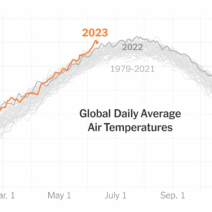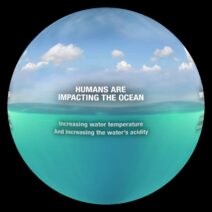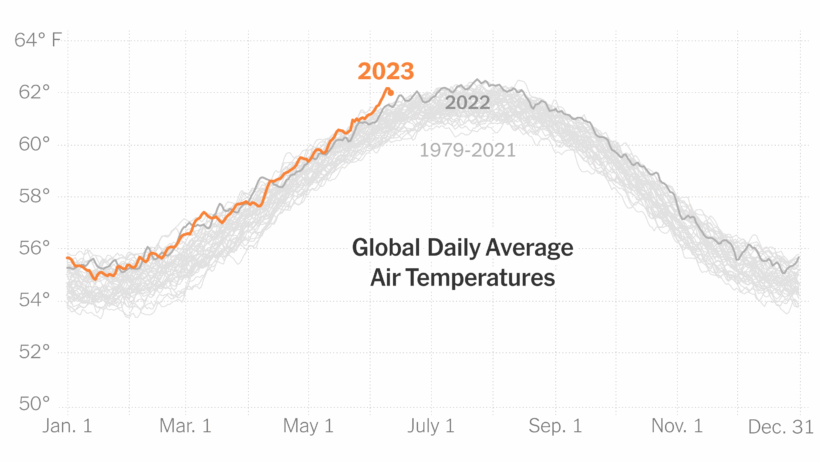As the specter of climate change looms larger, the phenomenon of extreme heat waves has emerged as a harbinger of our altered climate reality. This new normal presents profound challenges, demanding our attention and action. Each summer, rising temperatures no longer serve merely as an annual statistical increase but rather as a tangible warning of the consequences of our ecological footprint. This relentless march toward sweltering conditions is intricately linked to the broader narrative of global warming and underscores the urgent need for adaptative strategies.
In many regions, the onset of heat waves has transitioned from a sporadic occurrence to a disturbing trend marked by frequency and intensity. The consequences of these extreme weather events reverberate through various facets of life, from public health to agricultural productivity, demanding a multifaceted understanding of their implications. This transformation is not merely a matter of discomfort; it encompasses a profound shift in environmental patterns, which can alter ecosystems and imperil human livelihoods.
The increase in average global temperatures, driven largely by the accumulation of greenhouse gases in the atmosphere, leads to more significant anomalies in weather patterns. Heat waves, defined as prolonged periods of excessively high temperatures, are a direct manifestation of such anomalies. The dynamics of heat waves are complex, influenced by factors such as ocean temperatures, atmospheric pressure systems, and land alterations. Consequently, understanding these interactions is crucial in the quest to mitigate their impacts.
Moreover, the psychological impact of enduring extreme heat cannot be underestimated. Communities experiencing these waves often report heightened levels of stress and anxiety. The discomfort is palpable as individuals grapple with sleepless nights, diminished productivity, and an overall decline in mental well-being. Urban areas, beset by the urban heat island effect, may see temperatures rise even further than their rural counterparts, exacerbating conditions and straining both healthcare systems and social networks.
Vulnerable populations are disproportionately affected by extreme heat. The elderly, children, and those with pre-existing health conditions face increased risks of heat-related illnesses, including heat exhaustion and heat stroke. The socioeconomic divide further complicates the landscape, as marginalized communities often lack access to resources such as air conditioning or adequate healthcare. A holistic approach must prioritize resilience-building, ensuring that all community members are equipped to endure the challenges that these climate events present.
Moreover, agriculture faces considerable challenges in the wake of rising temperatures. Crop yields are sensitive to fluctuations in weather, and as heat becomes more extreme, the risk of crop failure escalates. Prolonged periods of high temperatures can lead to increased evaporation of soil moisture, while heat stress can hamper photosynthesis, ultimately diminishing harvests. This dilemma poses a threat not only to local economies but also to global food security, as interconnected supply chains become strained under the weight of environmental pressures.
To combat the escalating effects of heat waves, innovative solutions must be pursued. Urban planning can play a pivotal role in forging climate-resilient cities. Incorporating green spaces, such as parks and green roofs, can help mitigate the urban heat island effect while enhancing biodiversity. Implementing water conservation strategies and heat-resilient agricultural practices can safeguard food security and promote sustainable livelihoods in the agricultural sector.
Technology also holds the potential to transform our response to extreme heat. While adaptation is vital, investing in renewable energy sources could help decrease reliance on fossil fuels, thereby reducing greenhouse gas emissions and alleviating some drivers of climate change. Advances in cooling technologies, such as energy-efficient air conditioning and passive design strategies in buildings, may offer immediate relief during heat waves while lowering long-term energy consumption.
Moreover, public awareness campaigns can galvanize community action, fostering a culture of climate consciousness. Educating individuals about the dangers of heat waves and promoting preparedness strategies can save lives. Simple measures, such as staying hydrated, seeking shade, and recognizing the early signs of heat-related illnesses, are vital skills that can empower communities. Such initiatives can engender a sense of agency, transforming passive observers into active participants in climate resilience.
In addition, paleoclimatology and historical climate data provide valuable insights into natural temperature fluctuations, helping us contextualize current trends. By understanding the historical patterns of climate variability and how they mesh with anthropogenic changes, we can better grasp the uniqueness of our current situation. At the nexus of climate science and public policy, these insights enable more informed decision-making that can guide effective climate action.
As we confront this new era of unrelenting heat, both adaptation and mitigation strategies become critical. Collaborative efforts across governmental, private, and civil society sectors are essential in fostering resilience to climate impacts. For every community facing the brunt of extreme heat, there is an opportunity for innovation and integration of sustainable practices that can lead to a more harmonious coexistence with our warming world.
In conclusion, extreme heat waves are not merely an inconvenience but a significant indication of the evolving reality of global warming. The challenges posed by these events necessitate a proactive, multifaceted approach that encompasses public health, urban planning, agricultural adaptation, and individual responsibility. Our collective response will define how well we navigate this era of climate change and the legacy we leave for future generations. The time to act is now; the consequences of inaction are too dire to contemplate.




